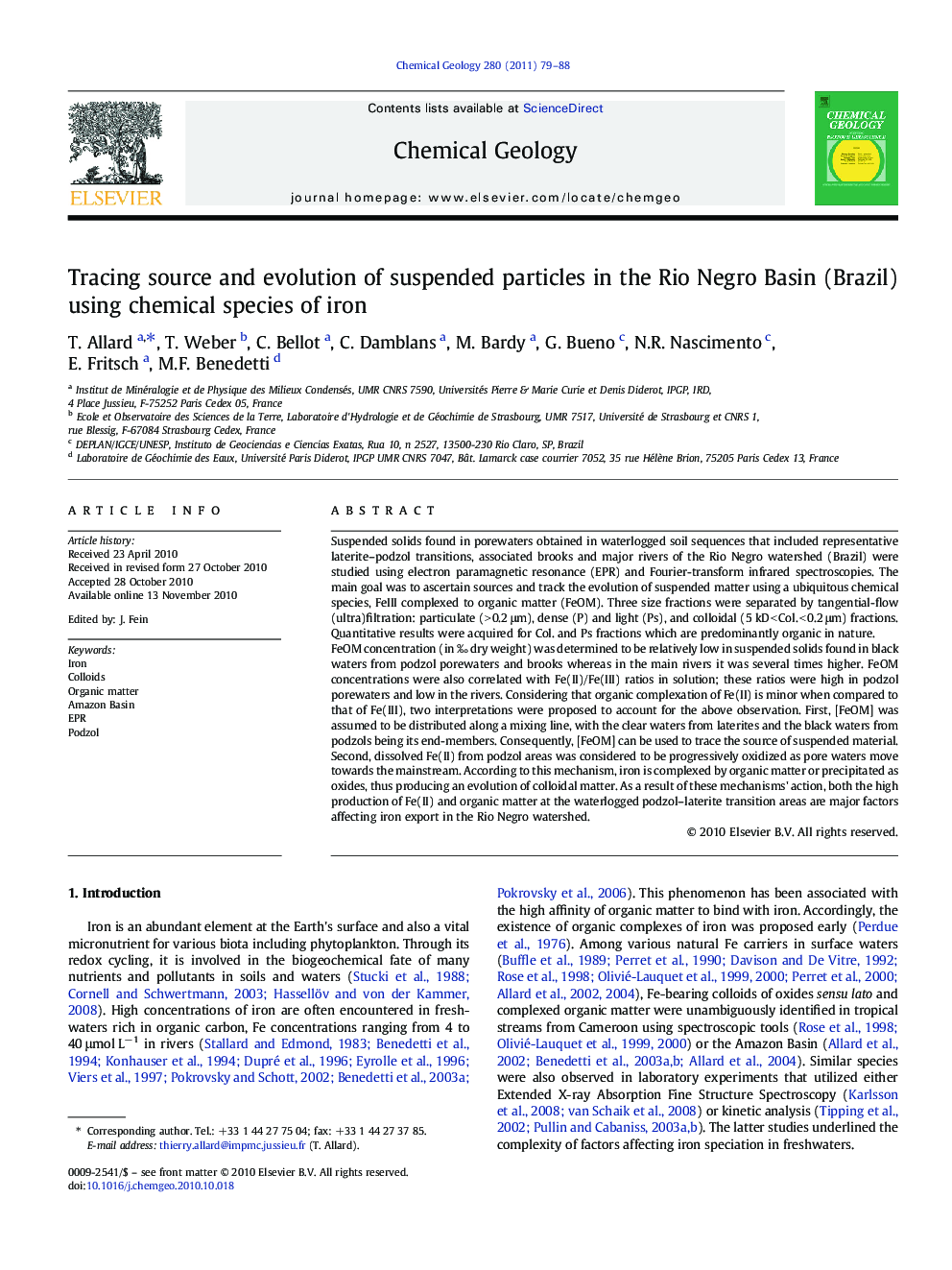| کد مقاله | کد نشریه | سال انتشار | مقاله انگلیسی | نسخه تمام متن |
|---|---|---|---|---|
| 4699885 | 1637676 | 2011 | 10 صفحه PDF | دانلود رایگان |

Suspended solids found in porewaters obtained in waterlogged soil sequences that included representative laterite–podzol transitions, associated brooks and major rivers of the Rio Negro watershed (Brazil) were studied using electron paramagnetic resonance (EPR) and Fourier-transform infrared spectroscopies. The main goal was to ascertain sources and track the evolution of suspended matter using a ubiquitous chemical species, FeIII complexed to organic matter (FeOM). Three size fractions were separated by tangential-flow (ultra)filtration: particulate (> 0.2 μm), dense (P) and light (Ps), and colloidal (5 kD < Col. < 0.2 μm) fractions. Quantitative results were acquired for Col. and Ps fractions which are predominantly organic in nature.FeOM concentration (in ‰ dry weight) was determined to be relatively low in suspended solids found in black waters from podzol porewaters and brooks whereas in the main rivers it was several times higher. FeOM concentrations were also correlated with Fe(II)/Fe(III) ratios in solution; these ratios were high in podzol porewaters and low in the rivers. Considering that organic complexation of Fe(II) is minor when compared to that of Fe(III), two interpretations were proposed to account for the above observation. First, [FeOM] was assumed to be distributed along a mixing line, with the clear waters from laterites and the black waters from podzols being its end-members. Consequently, [FeOM] can be used to trace the source of suspended material. Second, dissolved Fe(II) from podzol areas was considered to be progressively oxidized as pore waters move towards the mainstream. According to this mechanism, iron is complexed by organic matter or precipitated as oxides, thus producing an evolution of colloidal matter. As a result of these mechanisms' action, both the high production of Fe(II) and organic matter at the waterlogged podzol–laterite transition areas are major factors affecting iron export in the Rio Negro watershed.
Research Highlights
► FeIII complexed to organic matter is a tracer of the source of erosion products.
► It is always present in particular and colloidal size fractions.
► It is correlated to FeII/FeIII ratio in solution.
► Studied streams distribute between endmembers derived from podzols and laterites.
► Fe export in the Rio Negro basin is ascribed to high FeII and organic matter content.
Journal: Chemical Geology - Volume 280, Issues 1–2, 7 January 2011, Pages 79–88